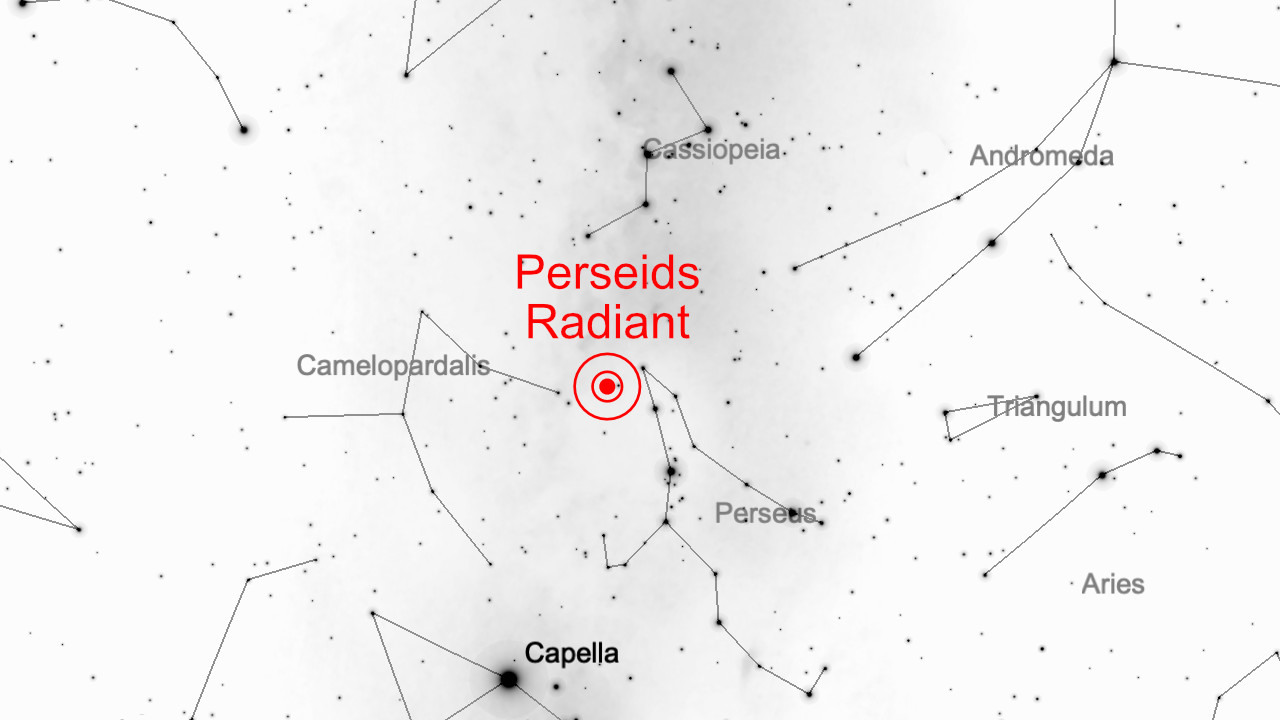| 2020 Aug 11: An Extra Special Perseids Shower (2020-6-30) ⬅︎ |
 |
The Perseids Meteor Shower is considered by many to be the best meteor shower of the year because of its high
hourly rate and that fact that it occurs in warm, clear August. This year's show will be especially good because it
will be joined by Jupiter, Saturn and Mars. What's more is that the moon won't be in the way for hours. The
Perseids 2020 shower is not to be missed!
What are the Perseids? Even though meteors are often called 'shooting stars', they have nothing to do with stars.
They are the dusty debris left behind by Comet Swift-Tuttle. When these sand-size pieces of rock collide with
earth's atmosphere, their great speeds cause the streaking flashes of light that we see as they burn up. The rate
can reach
150 and possibly 200 meteors per hour at the peak.
Although it's possible to spot Perseids between July 17 and August 24, the peak will be the night of August 11th
and the morning of the 12th. Look to the NE sky towards the constellation Perseus below the prominent 'W' shape
of Cassiopeia. Perseids appear to radiate from this point and that's why it is referred to as the shower's
radiant (see above).
If you want to maximize the number of meteors that you'll see, find a location far from city lights since lights
can interfere with viewing all but the brightest meteors. Many people in our area travel to Paradise and Sunrise at
Mt Rainier National Park for this show. No telescope or binocular is needed, but a good reclining
chair and/or blanket can be great aids.
Special for 2020: look for red Mars to the E and brilliant Jupiter and Saturn to the S. While these are 'naked-eye'
planets, a good telescope can allow you to see surface features, atmospheres, rings, moons and more. Neptune
and Uranus will also be out but these require a telescope and some planning (see the Star Guide for this date).
Sky Forecast for August 11/12:
* 8:26 PM Sunset: Civil twilight begins.
* 9:00 PM Nautical twilight: view bright stars and planets. Viewing meteors will be challenging.
* 9:42 PM Astronomical twilight: good viewing of brighter meteors and some dimmer ones.
* 10:29 PM Nighttime: best viewing of both bright and dim meteors.
* 12:04 AM Moon rise: as the moon gets higher, viewing meteors will become more challenging.
* 4:00 AM Peak of the Shower (highest hourly rate) but moonlight will be in the way.
Be sure to check out our Star Guide feature with its tools for knowing what's out each night and where to
look.
|
| |



